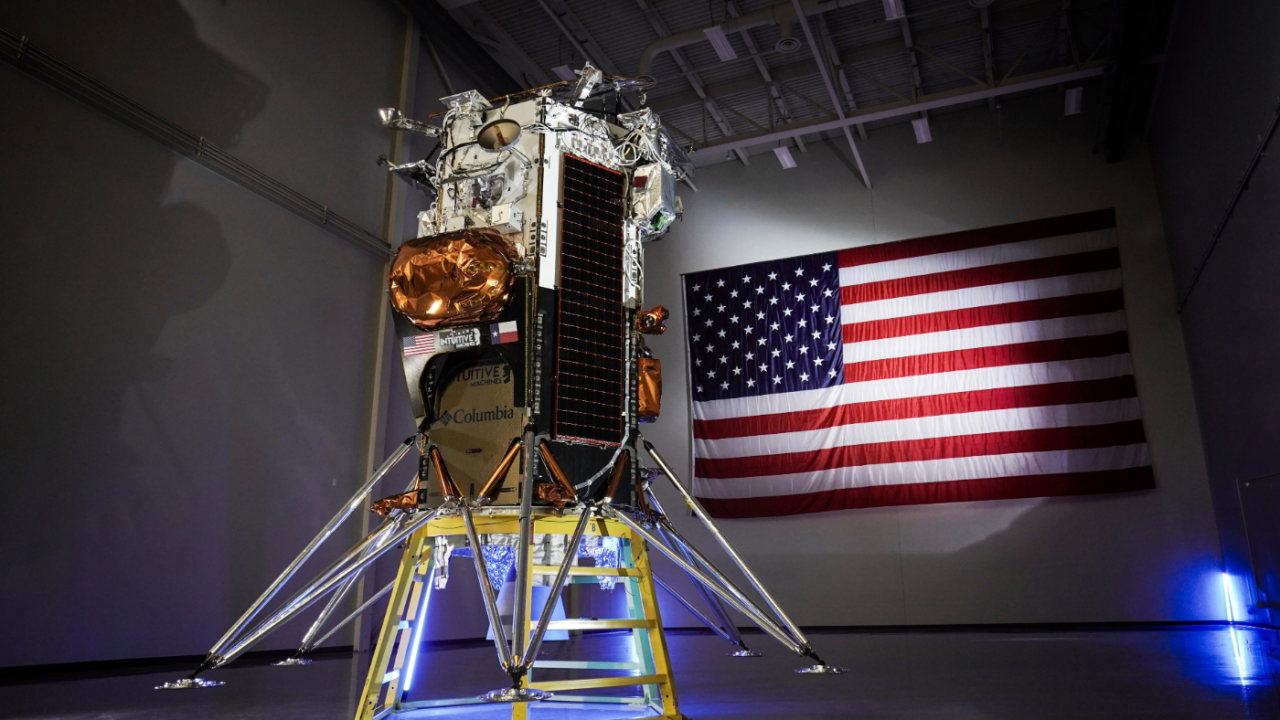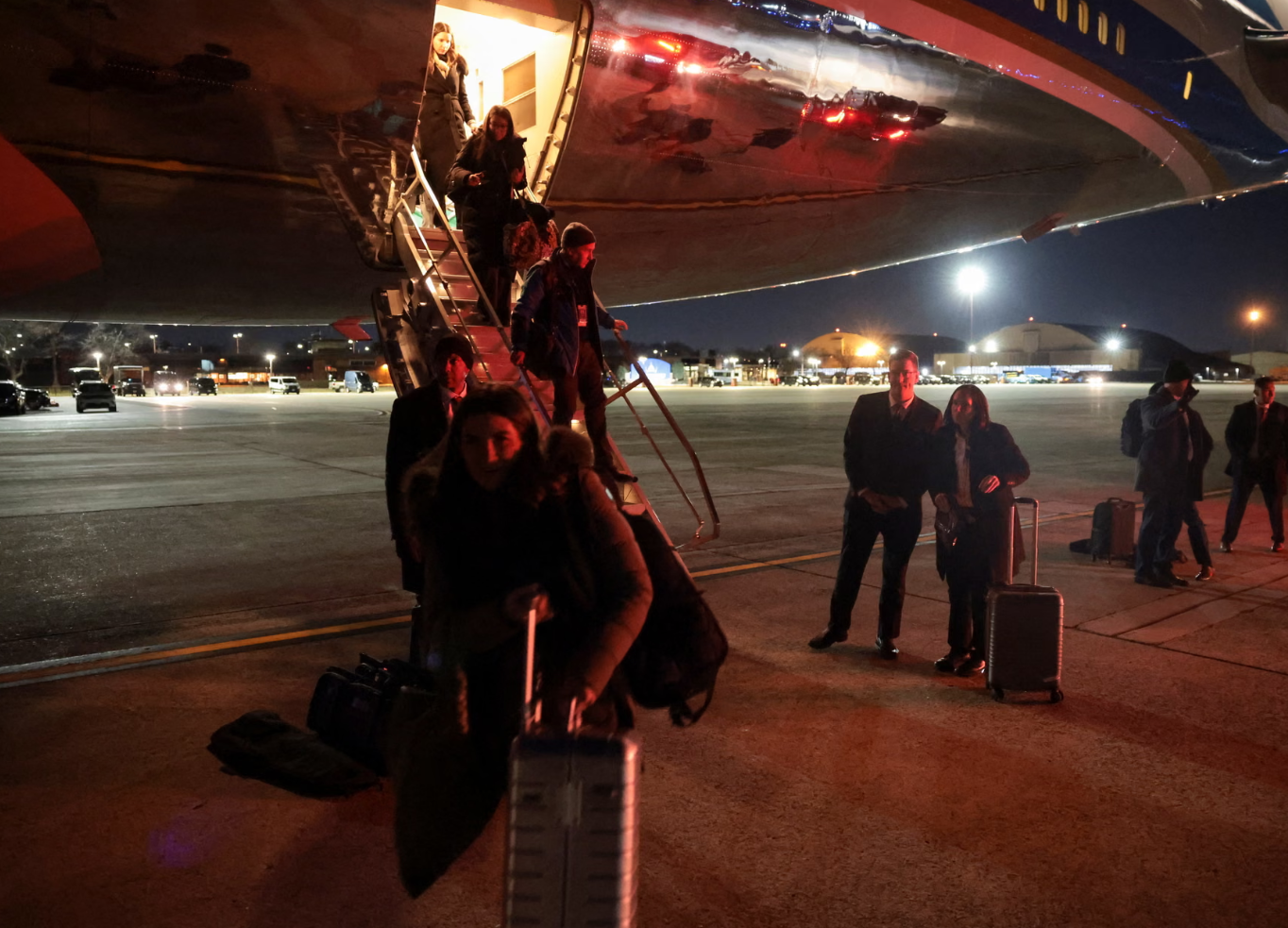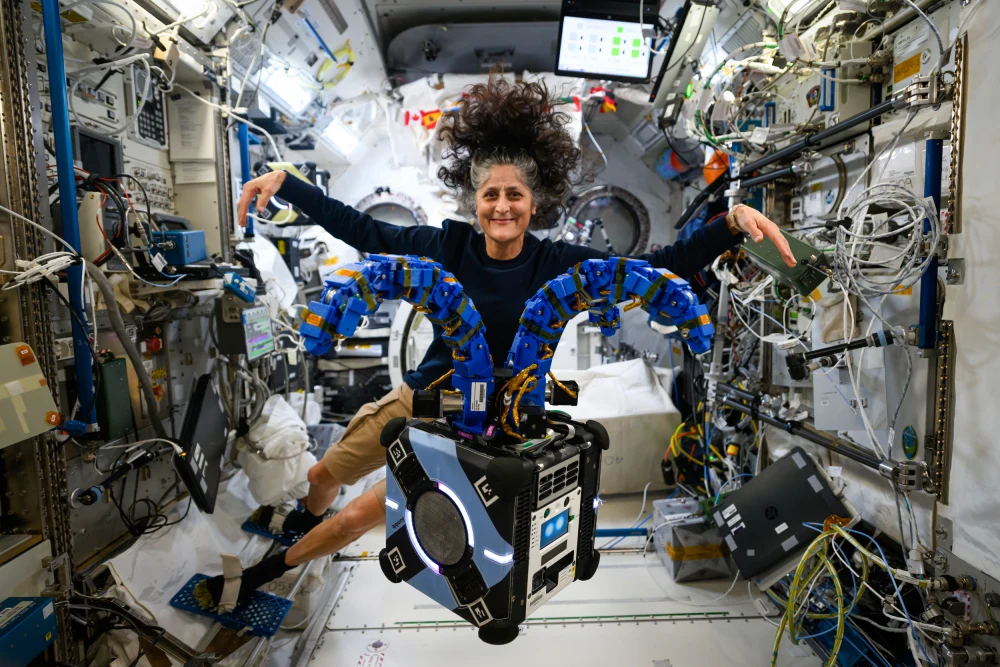Shortly after 1 a.m. EST on Feb. 15, the second attempt of a commercial lunar landing mission lifted off on board a SpaceX Falcon 9. The Nova-C lander, also dubbed the Odysseus, successfully landed near the lunar south pole on Thursday.
The Intuitive Machines IM-1 mission is the second as part of the Commercial Lunar Payload Services program initiative started by NASA to encourage commercial moon landing missions as part of the Artemis program. It is taking place about a month after the failed Astrobotic Peregrine mission that burned up in the Earth’s atmosphere rather than landing on the lunar surface.
The Nova-C’s voyage to the moon occurred with only a few minor hitches. The lander tested, for the first time, a methane/oxygen engine in space. The “commissioning” burn was crucial since the same engine was to be used for executing the moon landing.
The spacecraft also returned images of the Earth it had left behind. One, an image of the whole Earth, much like the “Blue Marble” picture returned by Apollo 17 more than 50 years ago, inspired awe and wonder.
On Wednesday morning, Nova-C entered lunar orbit. Flight controllers spent the next day analyzing flight data and taking images of the lunar surface.
Before the Nova-C made its burn to begin to land, the laser range finder used to determine the altitude and velocity of the spacecraft failed. Intuitive Machines flight controllers uploaded a software patch that switched the lander to the NASA-provided Navigation Doppler Lidar. This experimental piece of equipment guided the Nova-C to a soft landing on the lunar surface.
After a few minutes, the Intuitive Machines flight controller got a faint signal from the Nova-C lunar lander verifying that it had landed on the moon late Thursday afternoon.
Two hours later, the company announced, “After troubleshooting communications, flight controllers have confirmed Odysseus is upright and starting to send data. Right now, we are working to downlink the first images from the lunar surface.”
In a subsequent press conference, Intuitive Machines representatives stated that the Nova-C had tipped over upon touchdown and was lying on its side. They expressed confidence that most of the science objectives could be achieved.
The Nova-C contains several payloads, provided by NASA and several private customers.
The NASA payloads include
Laser Retro-Reflector Array that can be used to determine precise ranging from spacecraft in lunar orbit
Navigation Doppler Lidar which measures velocity and range as the Nova-C lands. This equipment saved the moon landing.
Lunar Node 1 Navigation Demonstrator, which will be used to guide future lunar landers
Stereo Cameras, which measure plumes of lunar dust created by the Nova-C’s engines as it lands
Radiowave Observations at the Lunar Surface of the photoelectron Sheath that will be used for radio astronomy from the lunar surface
Radio Frequency Mass Gauge that will measure the amount of propellent in the Nova-C’s fuel tanks in the low gravity environment of the moon
The private payloads include
Tiger Eye 1, created by students at Louisiana State University to measure the radiation environment on the moon’s surface
ILO-X, an astronomical camera designed to test the concept of a lunar surface observatory
An EagleCam created by students at Embry-Riddle Aeronautical University will be ejected from the Nova-C and observe the lunar lander as it descends
Lunarprise, a data center prototype built by Galactic Legacy Labs
Moon Phases, a work of art by Jeff Koons
The Nova-C lander itself is wrapped in thermal reflective material developed by Columbia Sportswear and used to make jackets that reflect body heat.
Nova-C’s successful landing represents the first success of the Commercial Lunar Payload Services program approach to lunar exploration. Coming as it does so soon after Astrobotic Peregrine’s failure, Intuitive Machines’ achievement demonstrates that the commercial approach to returning to the moon works.
Nova-C is the very first commercial moon landing ever undertaken. It is also the first American moon landing since the 1972 Apollo 17 mission. It occurred more than six years after the official start of the Artemis program and a little less than six years after the announcement of the Commercial Lunar Payload Services program.
Still, the Intuitive Machines Nova-C constitutes only the beginning of a long process that will culminate in the first human astronauts to walk on the moon in about 55 years, currently scheduled for late 2026. Many things need to happen before the next moonwalkers, not to mention a permanent lunar base, appear on the moon. But the Nova-C landing proves that in a world filled with mendacity and self-inflicted horrors, great things are still possible.
Meanwhile, the second flight of a Nova-C, IM-2, is scheduled for no earlier than the fourth quarter of 2024.
Mark R. Whittington, who writes frequently about space policy, has published a political study of space exploration entitled “Why is It So Hard to Go Back to the Moon?” as well as “The Moon, Mars and Beyond” and, most recently, “Why is America Going Back to the Moon?” He blogs at Curmudgeons Corner.




